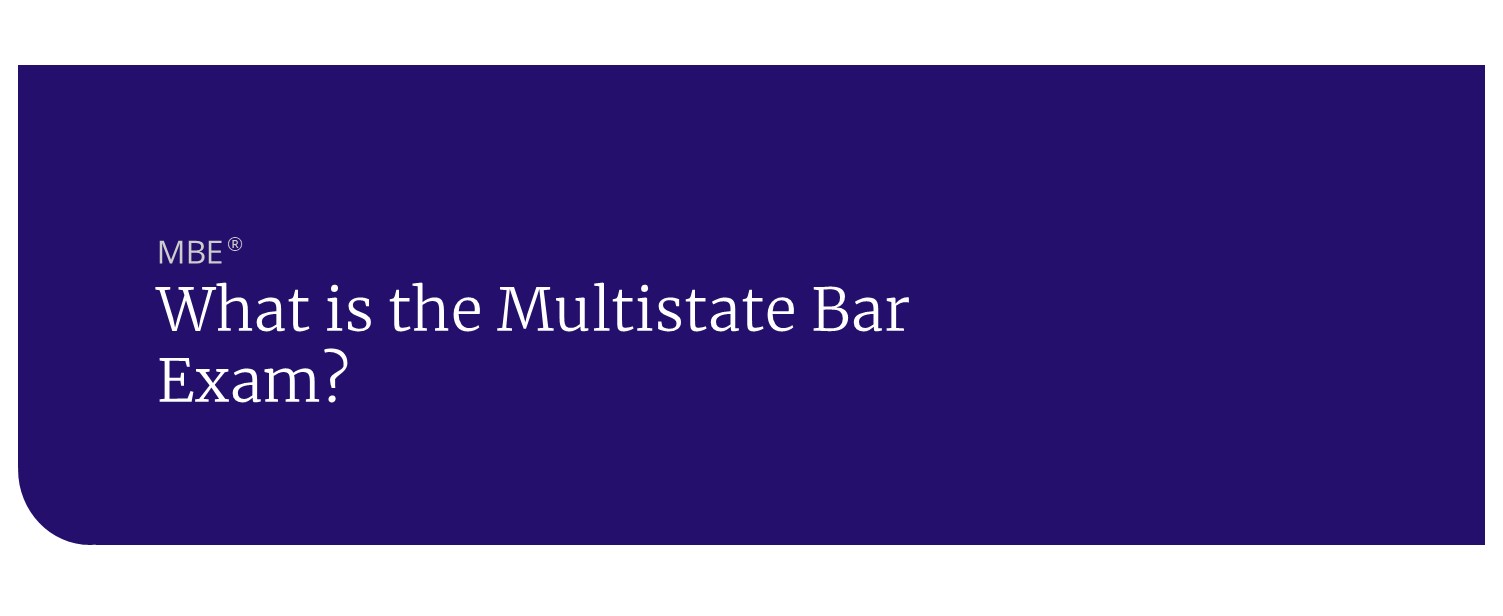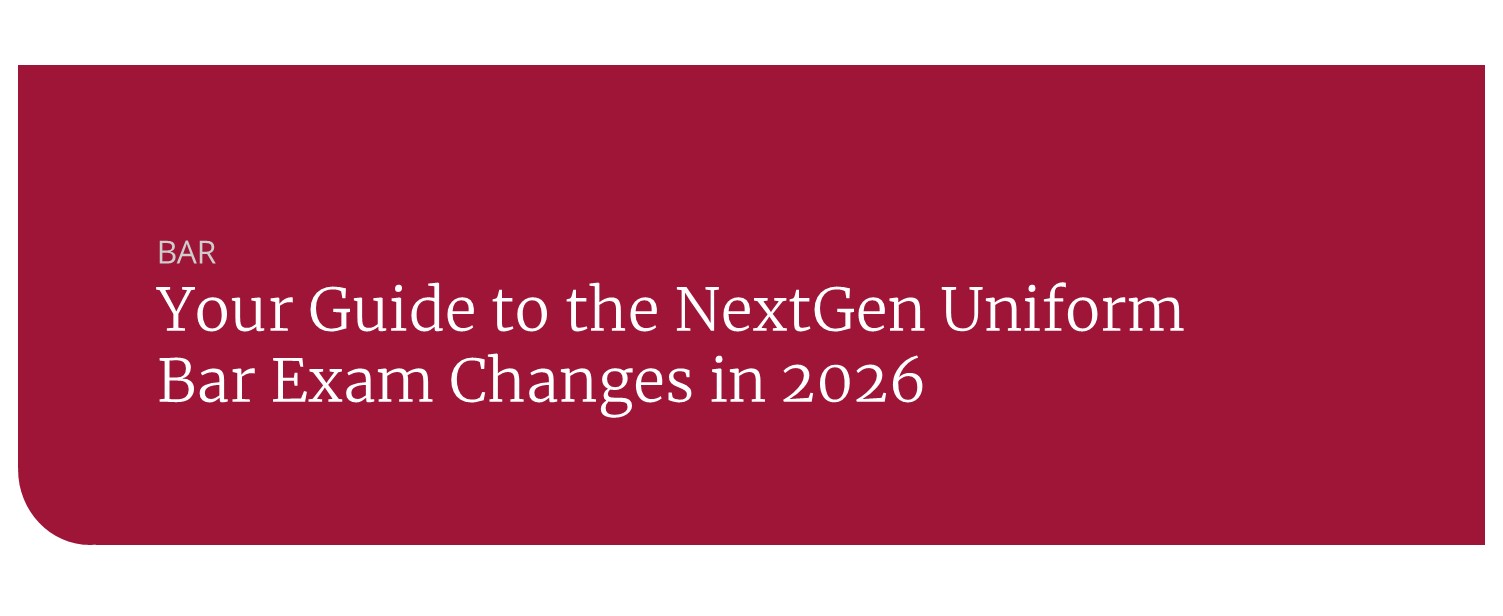What is the Multistate Bar Exam (MBE®)?
One of the most common misconceptions held by new law students is that they can simply sit for something called the Multistate Bar Exam, and upon passing they will be able to practice law in all fifty states. This kind of misunderstanding is understandable considering the confusing moniker, but for most Bar takers, the Multistate Bar Exam (MBE) is merely one component of the complete test.
Created by the National Conference of Bar Examiners (NCBE), the MBE is designed to “assess the extent to which an examinee can apply fundamental legal principles and legal reasoning to analyze given fact patterns.” The MBE is part of the Bar exam in all U.S. jurisdictions with the exception of Louisiana and Puerto Rico.
The test comprises 200 multiple-choice questions administered in two, three-hour sets of 100 questions each. No state-specific law is tested on the MBE. The subjects you will encounter on the MBE are as follows: Civil Procedure, Constitutional Law, Contracts, Criminal Law and Procedure, Evidence, Real Property, and Torts.
For many Bar takers, the MBE comprises as much as 50% of their total Bar exam score, so its importance cannot be understated. In addition, many states accept the transfer of MBE scores from other jurisdictions, so those who wish to obtain law licenses in multiple states will not have to sit for another full examination. In fact, the District of Columbia and Minnesota will allow applicants who receive the requisite MBE scores (133 for D.C. and 145 for Minnesota) to waive directly into that state without sitting for the Bar at all.
There are many things you can do before you even graduate from law school to ensure your success on the MBE. The first to consider is to take any MBE subject class that is offered as an elective, such as Evidence or Criminal Procedure. These are very nuanced subjects, and they are sometimes difficult to master during the brief Bar preparation period, so the more time you can invest in learning these core concepts, the better. Another thing you can do is participate in any Bar prep workshops or programs your school might offer, especially those that include MBE diagnostic testing. The NCBE also offers a comprehensive guide to the exam that contains sample questions and subject matter outlines for review.
Expert Test Tip
Lauren Yost, Bar Exam Curriculum Development Specialist
“Studying for the bar exam is a marathon, not a sprint.”
How To Study for the MBE
One mistake many Bar takers make from the outset is that they approach the MBE like any other multiple-choice test. They believe that if they have a solid understanding of the underlying material they will easily be able to spot the correct answer choice most of the time. The fallacy of this kind of thinking is that it assumes knowledge alone will equal success on test day. This is simply not the case.
The only way to know what you will be up against on game day is to practice as many MBE questions as you can lay your hands on every day that you plan to study. Your Bar review course will provide you with practice questions, you can obtain additional practice questions directly from the National Conference of Bar Examiners.
Your Bar preparation period will typically only be 6-8 weeks long, so you must begin your MBE practice regime as soon as you can and stick with it. Daily practice will ensure that you not only master the underlying concepts but that you can apply them on the actual test as well. You should tackle between 33-50 practice questions each day that you study, giving yourself at least two hours for each set. This will allow you to carefully review all your answers and understand both why you got questions right, and why you got them wrong.
Though you will only have an average of 1.8 minutes to answer each question on the actual test, you should not worry about timing yourself when you first begin your Bar prep.
Accuracy and comprehension are far more important than speed for the first several weeks of your bar studies. As you become more familiar with the format of the test, your speed will increase naturally, and you can begin to time yourself then.
Also important is not to become distracted by sub-topics that will only appear in a couple of questions (for example, the Rule Against Perpetuities). You should instead concentrate on topics that are more heavily tested on the MBE, as about 50% of the questions are derived from these areas of law. First Amendment Rights, Formation Issues, Mortgages, Hearsay, Crimes, and Negligence are key areas, and are, therefore, where you should focus your efforts so you can rack up the most points.
Finally, learn to trust your gut. Don’t forfeit valuable points by second-guessing yourself and talking yourself out of a correct answer choice by fighting the facts in the question prompt. One thing you can do to gauge how often you are doing this is to create a simple notation system to indicate which answer choice was your “gut response” and which answer choice you ultimately went with. (For example, you can draw a triangle around the “gut answer” and circle your final choice.) When you review your work, tabulate how many times your first response was correct and you might be surprised.






